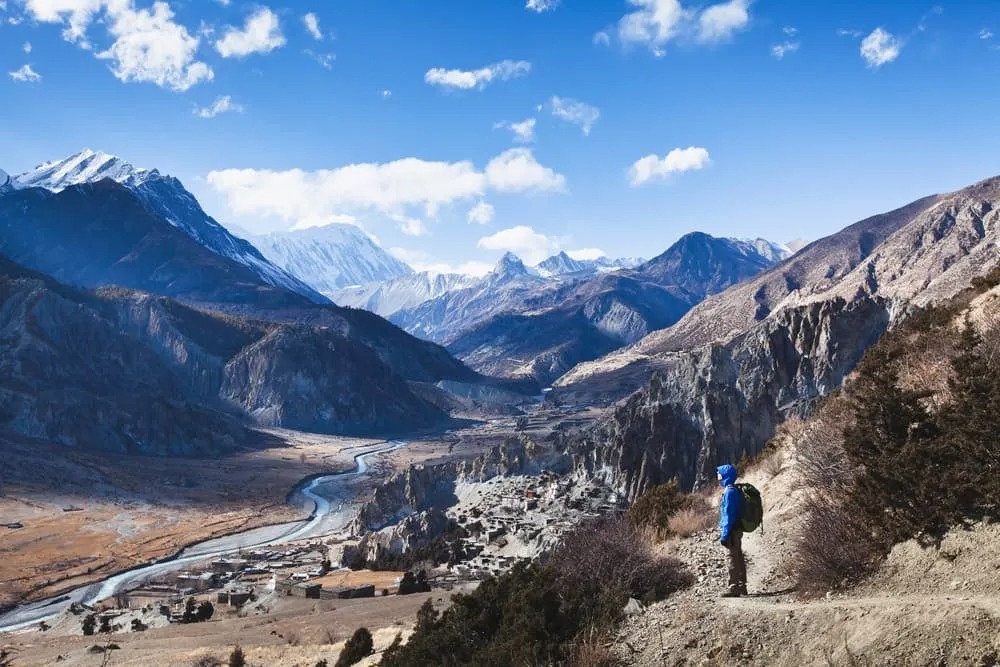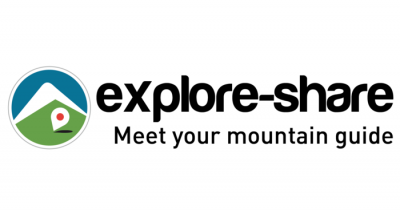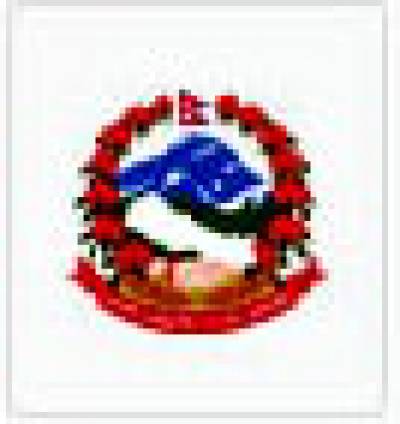ANNAPURNA CIRCUIT TILICHO LAKE POON HILL TREK 13 DAYS FROM POKHARA
The Annapurna Circuit Trek via Tilicho Lake, Ghorepani, and Poon Hill from Pokhara offers an unforgettable journey through the diverse landscapes and culture of the Annapurna region. The adventure begins with a scenic drive from Pokhara to Besisahar, followed by a local shared jeep ride to Dharapani, where the trekking begins.
From Dharapani, the trail takes you through lush forests, charming villages, and along the picturesque river valleys as you make your way to Chame, the first major stop of the trek. Continuing on, you’ll trek to Pisang and then to Manang, passing through the scenic village of Ngawal. This is a crucial acclimatization point, and the rest day here allows you to explore the village, take in the views, and prepare for the higher altitudes ahead.
Next, the trek leads you to Tilicho Base Camp, situated at an altitude of 4,150 meters. From here, you hike up to Tilicho Lake, known as the highest lake in the world, nestled in the shadow of towering peaks. The serene beauty of the lake is breathtaking and is one of the highlights of this trek. After visiting the lake, you’ll descend to Shree Kharka and continue to Yak Kharka, a remote high-altitude settlement.
From Yak Kharka, the trail takes you to Thorong Phedi, which serves as the base for crossing Thorong La Pass, one of the highest trekking passes in the world. Once over the pass, you descend to Muktinath, a sacred site for Hindus and Buddhists, offering a spiritual experience with its sacred temples and views of the surrounding mountains.
The journey continues with a local bus ride to Tatopani, where you can relax in the natural hot springs. From Tatopani, you trek to Ghorepani, a beautiful vantage point for sweeping views of the Annapurna and Dhaulagiri ranges. The highlight here is the sunrise view from Poon Hill, offering a stunning panoramic view of the Himalayas.
The trek concludes with a descent to Nayapul, followed by a scenic drive back to Pokhara, marking the end of an epic 13-day adventure that combines natural beauty, cultural exploration, and high-altitude trekking.
ITINERARY
Day 1 : Drive from Pokhara to Dharapani (1,960m) – Duration: 8-9 hours.
Your adventure begins with a scenic drive from Pokhara to Dharapani. The journey takes about 8-9 hours, including a ride by local bus to Besisahar, followed by a shared jeep to Dharapani. As you travel through lush valleys, terraced fields, and local villages, you’ll get a glimpse of the beautiful countryside that surrounds the Annapurna region.
Day 2 : Trek from Dharapani to Chame (2,710m) – Duration: 5-6 hours.
After breakfast, you start your trek from Dharapani. The trail ascends gradually, passing through forest trails, suspension bridges, and villages. The route offers stunning views of the Manaslu Range. After about 5-6 hours of trekking, you will arrive at Chame, the district headquarter of Manang.
Day 3 : Trek to Pisang (3,115m) – Duration: 4-5 hours.
On this day, the trek continues from Chame to Pisang. The trail offers some of the best views of the Annapurna range, particularly Annapurna II. You will pass through pine forests and reach Pisang, where you’ll enjoy amazing panoramic views of the Himalayas. The day’s trek takes around 4-5 hours.
Day 4 : Trek to Manang (3,540m) via Ngawal village – Duration: 6-7 hours.
Today, the trek takes you from Pisang to Manang, passing through the picturesque Ngawal village. You’ll cross several suspension bridges, walk along rocky paths, and enjoy beautiful views of Annapurna II, III, and Gangapurna. The journey is around 6-7 hours, and once you reach Manang, you’ll have stunning views of the surrounding mountains.
Day 5 : Rest Day at Manang for Acclimatization.
This day is crucial for acclimatization, as you’ll be trekking at higher altitudes. Spend your time in Manang resting and exploring the village. You can visit the Manang Monastery or take a short hike to Gangapurna Lake. The extra day allows your body to adjust to the altitude, minimizing the risk of altitude sickness.
Day 6 : Trek from Manang to Tilicho Base Camp (4,150m) – Duration: 5-6 hours.
After acclimatizing, you begin your trek towards Tilicho Base Camp. The trail ascends gradually, passing through alpine meadows and scenic landscapes. The day’s trek offers incredible views of Tilicho Peak and the surrounding mountains. After a 5-6 hour trek, you will arrive at Tilicho Base Camp.
Day 7 : Hike to Tilicho Lake (4,920m) & Return to Base Camp, then Trek to Shree Kharka – Duration: 7-8 hours.
This day involves a challenging but rewarding hike to Tilicho Lake, the highest lake in the world. After enjoying the serene beauty of the lake, you’ll retrace your steps back to Tilicho Base Camp for a rest, and then continue to Shree Kharka. The entire journey takes about 7-8 hours, but the views of Tilicho Peak make it all worthwhile.
Day 8 : Trek from Shree Kharka to Yak Kharka (4,200m) – Duration: 5-6 hours.
On this day, you continue your journey from Shree Kharka to Yak Kharka. The trail meanders through alpine meadows, passing yak herders' camps. You will witness the vast, open landscapes and rugged terrain of the Annapurna region. It’s a 5-6 hour trek that provides an opportunity to adjust further to the altitude.
Day 9 : Trek from Yak Kharka to Thorong Phedi (4,500m) – Duration: 3-4 hours.
Today’s trek from Yak Kharka to Thorong Phedi is a short but steep ascent. You’ll pass through rocky trails and beautiful meadows. Once you reach Thorong Phedi, you’ll have a great view of Thorong La Pass (the highest point of the trek), and this will be your final stop before heading to the pass.
Day 10 : Trek from Thorong Phedi via Thorong La Pass (5,416m) to Muktinath (3,802m) – Duration: 7-9 hours.
The highlight of the trek comes today as you cross Thorong La Pass, the highest point of the Annapurna Circuit at 5,416m. The ascent to the pass can be challenging due to the high altitude, but the views from the top are spectacular. After reaching the pass, descend to Muktinath, a sacred site for both Hindus and Buddhists. This is a long day, taking around 7-9 hours in total.
Day 11 : Drive from Muktinath to Tatopani (1,200m) – Duration: 6-7 hours.
From Muktinath, you take a local bus or jeep to Tatopani, a village famous for its natural hot springs. The drive takes about 6-7 hours, passing through remote villages, terraced fields, and rivers. Once in Tatopani, relax in the hot springs and recover from the trek.
Day 12 : Trek from Tatopani to Ghorepani (2,860m) – Duration: 7-8 hours.
Today’s trek takes you from Tatopani to Ghorepani. The trail ascends steeply through forests of rhododendron and oak. After 7-8 hours of trekking, you will arrive at Ghorepani, a popular stop for trekkers, where you can enjoy panoramic views of the Annapurna and Dhaulagiri mountain ranges.
Day 13 : Hike to Poon Hill (3,210m) & Trek to Nayapul, then Drive to Pokhara (850m) – Duration: 7-9 hours.
The final day begins with an early morning hike to Poon Hill for breathtaking sunrise views over the Annapurna and Dhaulagiri ranges. Afterward, you trek down to Nayapul, where a vehicle awaits to drive you back to Pokhara. The trek takes about 7-9 hours in total, completing the loop of your amazing journey.
SERVICES
Cost Included in Your Package
- Drive from Pokhara to Besisahar by local bus and Besisahar to Dharapani by local shared Jeep.
- Drive from Muktinath to Tatopan by local bus & Nayapul to Pokhara by private car at the end of the trek.
- Tea House/Lodge accommodation during the trek.
- Three meals a day (Breakfast, Lunch, and Dinner) are provided throughout the trek.
- Experienced and qualified trek leader (guide) with a government license, and an assistant trekking guide for groups of 8 or more trekkers.
- Porter service: One porter for every two trekkers to help carry your luggage.
- Porters' coverage: Their salary, food, accommodation, insurance, and safety equipment.
- The Annapurna Conservation Area Permit (ACAP) fee is included.
- The Trekkers Information Management System (TIMS) card fee is covered.
- Use of trekking gear: Sleeping bag, down jacket, duffel bag, and walking poles (if you don't have your own), to be returned after the trek.
- Assistance with emergency rescue operations (funded by your travel insurance) in case of severe health conditions.
- Sherpa Expedition and Trekking appreciation certificate after completing the trek.
- Oxygen meter to check your pulse, oxygen saturation, and heart rate twice daily, ensuring your health and safety during the trek.
Cost Not Included in Your Package
- International Flight to and from Nepal.
- Nepal entry visa fee: Visas can be obtained easily on arrival at Tribhuvan International Airport, Kathmandu. The fees are as follows:
- $30 USD for a 15-day visa
- $50 USD for a 30-day visa
- $125 USD for a 90-day visa
- Accommodation and meals in Pokhara (other than those provided during the trek).
- Extra night accommodation in Kathmandu or Pokhara due to early arrival, late departure, or early return from trekking for any reason outside the scheduled itinerary.
- Personal expenses such as shopping, snacks, bar bills, tea, coffee, hot water, bottled or boiled water, shower fees, Wi-Fi, laundry, telephone calls, battery recharges, extra porters, etc.
- Personal clothing and gear not provided in the package.
- Travel insurance: It is strongly recommended to have insurance that covers trekking in high-altitude areas.
- Tips for your guide and porters, which is customary in Nepali culture.
- Additional costs or delays caused by circumstances beyond our control, such as landscape changes, bad weather, itinerary modifications for safety, illness, changes in government policy, political instability, strikes, or other unforeseen events.
- NOTE: If you return earlier from the trek due to sickness or any other reason, expenses for flights, hotels, meals, and other services are nonrefundable. You will be responsible for any additional costs incurred in Kathmandu or Pokhara.
EQUIPMENTS
The following information will give you some idea about what you need to bring for the trek. It is important you do not forget the essential items, as this will determine your comfort and safety on the trek. Equally important is that you do not burden yourself with unnecessary equipment on the trek.
- Sleeping Bag (Sherpa Teams will provide but need to return after completing the trip)
- Duffel Bag (Sherpa Teams will provide but need to return after completing the trip)
- Fleece jacket or pullover
- Waterproof windbreaker or windcheater
- Thermal underclothes
- Rain poncho
- Down jacket (Sherpa Teams will provide but need to return after completing the trip)
- Fleece or wool trousers
- Sun hat or scarf
- Trekking pants (two pairs)
- Mittens or woolen gloves
- Hiking socks (several pairs)
- Moisture-wicking shirts, including t-shirts
- Trekking shoes or boots with spare laces
- Flip-flops or sandals for relaxing in the evenings
- Underwear (several pairs)
- Swimsuit or swimming costume
- Sunglasses
- Headlamp or flashlight/torch
- Sleeping bag (Sherpa Teams can provide this for you)
- Trekking poles (if desired)
- Hiking backpack with a capacity of at least 40 liters
- Small lock for your backpack
- Reusable water bottles (at least two liters)
- Water purification tablets or filtration device
- Wash towel
- Basic first aid kit
Toiletries (tissues, toilet paper, moisturizer, lip balm, sunscreen, sanitary pads, hand sanitizer, nail clippers, a small mirror, toothbrush, toothpaste, glasses, contacts, etc.)
GOOD TO KNOW
🏞️ Trekking Permits and TIMS Card
Before starting your trek, you’ll need to obtain the necessary trekking permits, such as the Annapurna Conservation Area Permit (ACAP) and the Trekkers' Information Management System (TIMS) card. These are required to enter the Annapurna region and help ensure your safety while trekking.
🌡️ Weather and Climate
The weather can vary significantly depending on the season and altitude. The best time to trek is during the autumn (September-November) and spring (March-May) seasons when the weather is stable and temperatures are moderate. At higher altitudes, the weather can change rapidly, so be prepared for cold conditions, especially at Tilicho Lake and Thorong La Pass.
🥾 Physical Preparation
The trek requires a moderate level of physical fitness, as it involves long days of hiking at high altitudes. To prepare, it's important to engage in regular cardiovascular exercise, such as hiking, running, or cycling. Additionally, strength training for your legs and core will help you navigate the varied terrain.
🏨 Accommodation During the Trek
Accommodation along the Annapurna Circuit is generally available in the form of teahouses. These are basic lodges offering warm meals and a place to rest overnight. Be prepared for basic amenities in remote areas, but you’ll find hot showers and Wi-Fi in some places along the trek.
🍲 Meals on the Trail
Traditional Nepali meals, such as dal bhat (lentil soup and rice), momo (dumplings), and noodle soups are popular choices along the trail. The further you go, the more limited the menu becomes, but you can usually find vegetarian options in teahouses. Make sure to stay hydrated, especially at higher altitudes.
💧 Water and Hydration
It's essential to stay hydrated during the trek. Avoid drinking untreated water from streams and taps; always purify water using a filter or iodine tablets. Most teahouses sell bottled water, but it’s a good idea to bring a reusable water bottle with a filter to reduce plastic waste.
🚶♂️ Altitude and Acclimatization
As you ascend to higher altitudes, such as Tilicho Lake and Thorong La Pass, acclimatization becomes crucial. Take rest days in places like Manang to help your body adjust to the altitude and reduce the risk of altitude sickness. It’s important to listen to your body and descend if you feel unwell.
💼 What to Pack
When trekking in the Annapurna region, pack lightweight, moisture-wicking clothing, a sturdy pair of trekking boots, a good-quality sleeping bag, and a warm jacket. Don't forget your sunglasses, sunscreen, and a headlamp for early morning or late-night hikes.
🕉️ Cultural Sensitivity
The Annapurna region is home to various ethnic groups, including Tibetan Buddhists and Hindus. Be respectful of local customs, dress modestly, and ask for permission before taking photos, especially of people and religious sites.
🚕 Transportation and Getting There
Reaching the starting point of the trek from Pokhara typically involves a local bus ride to Besisahar followed by a jeep to Dharapani. Local buses and jeeps are affordable and the primary means of transportation. Be prepared for bumpy roads, especially on the jeep ride.
MAP
PHOTOS/Videos
Departures
Select a departure month
Fill out the form below and a Travel Expert will reach out to create your perfect tour.
FAQS
What is the best time to trek the Annapurna Circuit?
The best times to trek the Annapurna Circuit are during the autumn (September to November) and spring (March to May) seasons. The weather is more stable, and the temperatures are ideal for trekking.
What permits do I need for the Annapurna Circuit Trek?
To trek the Annapurna Circuit, you'll need the Annapurna Conservation Area Permit (ACAP) and a Trekkers' Information Management System (TIMS) card. Both can be obtained in Pokhara or Kathmandu.
How difficult is the Annapurna Circuit Trek via Tilicho Lake?
The trek is considered moderate to challenging due to the high altitudes, long trekking days, and the Thorong La Pass at 5,416 meters. Proper acclimatization and physical fitness are key to completing the trek safely.
Is it necessary to hire a guide or porter for the trek?
While it is not mandatory to hire a guide or porter, it is highly recommended for safety and convenience. Guides can help with navigation and ensure you’re trekking safely, while porters assist in carrying your luggage.
How long does the trek take?
The Annapurna Circuit Trek via Tilicho Lake typically takes 12 to 13 days, depending on the route and acclimatization. It includes trekking through picturesque villages, reaching Tilicho Lake, crossing Thorong La Pass, and visiting Ghorepani and Poon Hill.
What type of accommodation is available during the trek?
Accommodation is available in teahouses along the route. These provide basic facilities, such as beds, meals, and sometimes Wi-Fi. Higher altitudes might have more limited options, so be prepared for more basic services as you ascend.
What should I pack for the Annapurna Circuit Trek?
Essential items include warm clothing (for higher altitudes), trekking boots, a sleeping bag, sun protection (hat, sunscreen, sunglasses), and a water purification system (tablets or filters). Be sure to pack light and carry only necessary items.
Is altitude sickness a concern on this trek?
Yes, altitude sickness is a concern as the trek reaches heights above 5,000 meters at Thorong La Pass and Tilicho Lake. Acclimatization days, staying hydrated, and ascending slowly are essential to prevent altitude sickness.
Can I trek the Annapurna Circuit without a guide?
It is possible to trek independently, but it can be challenging due to remote areas, changing weather, and potential navigation difficulties. Hiring a guide is recommended for safety, especially for beginners or those unfamiliar with trekking in the Himalayas.
How do I get to the Annapurna Circuit from Pokhara?
You can reach the start of the trek from Pokhara by taking a local bus to Besisahar, followed by a shared jeep to Dharapani, the official starting point of the trek. Buses and jeeps are affordable and widely used for transport to the trek’s starting point.
Latest Traveller’s Reviews
Travel experiences of our clients who recently returned from their trips.
100%
Based On 5428 Reviews
Marcel Mastenbroek
Netherlands
April 9, 2025
Beautiful adventure
My brother and I had a great trip to the Everest Base Camp. Together with Santa our very well informed gide, who took care of us in a fantastic way and gave us much information during the hike, and Gulzen our porter (who carried each day our two bags of 10kg each plus his own bag....unbelievable). We had a wonderful time in the beautiful Himalayas, it was a lifetime experience!
Isabelle Fournier
Belgium
April 3, 2025
Incredible Journey With a True Legend
The Everest Three Pass Trek is hands-down the most beautiful and challenging trek I’ve ever done, and it was made unforgettable by our amazing guide, Pem Dorje Sherpa, from Sherpa Expedition & Trekking. Pem Dorje is a legend in every sense—calm, wise, strong, and full of stories. He knew the trails inside out and constantly kept us motivated, safe, and smiling. From the glacier crossings of Cho La to the dramatic views from Gokyo Ri, he made every moment special. One day, I struggled with altitude headaches, and Pem Dorje immediately adjusted our plan, gave me warm soup, and walked beside me at my pace. That level of care made all the difference. The trail itself is pure magic—massive peaks, prayer flags fluttering in the wind, quiet Sherpa villages, and stunning alpine lakes. We even spotted musk deer and Himalayan pheasants! Sherpa Expedition handled everything professionally, from airport pickup to gear checks. The porters were kind and efficient, and we had zero logistical issues. If you want to push yourself while being fully supported by a kind, knowledgeable guide, ask for Pem Dorje. You’ll finish stronger than you ever imagined—and happier, too.
Isabella Martinez
Australia
April 1, 2025
Sherpa-Led Magic in the Mountains – Guided by Tsering Phurba Sherpa
To say that the Everest Three Pass Trek was life-changing would be an understatement. The stunning peaks, vast glaciers, and kind people left an imprint on my soul. But what truly made the trek magical was Tsering Phurba Sherpa, our incredible guide from Sherpa Expedition & Trekking. Tsering was full of joy, laughter, and strength. He was a motivator and a protector—always keeping an eye on our group, adjusting our itinerary when needed, and celebrating every little win with us. I remember the cold mornings and long days, and how Tsering always had hot tea or a snack ready when we needed it most. His care was beyond professional—it felt personal. He even helped me with my backpack straps to ease shoulder strain, and gave away his spare headlamp to someone who lost theirs. The trek itself was everything I hoped for—raw, rugged, and rewarding. We hiked through snow, ice, rock, and forest. The Gokyo Lakes glowed like crystals, and Everest from Kala Patthar was overwhelming. Sherpa Expedition created the perfect balance between challenge and care. If you want to do this trek right, go with them—and ask for Tsering Phurba. You won’t regret it.
People Considering This Package Right Now Check availability






















